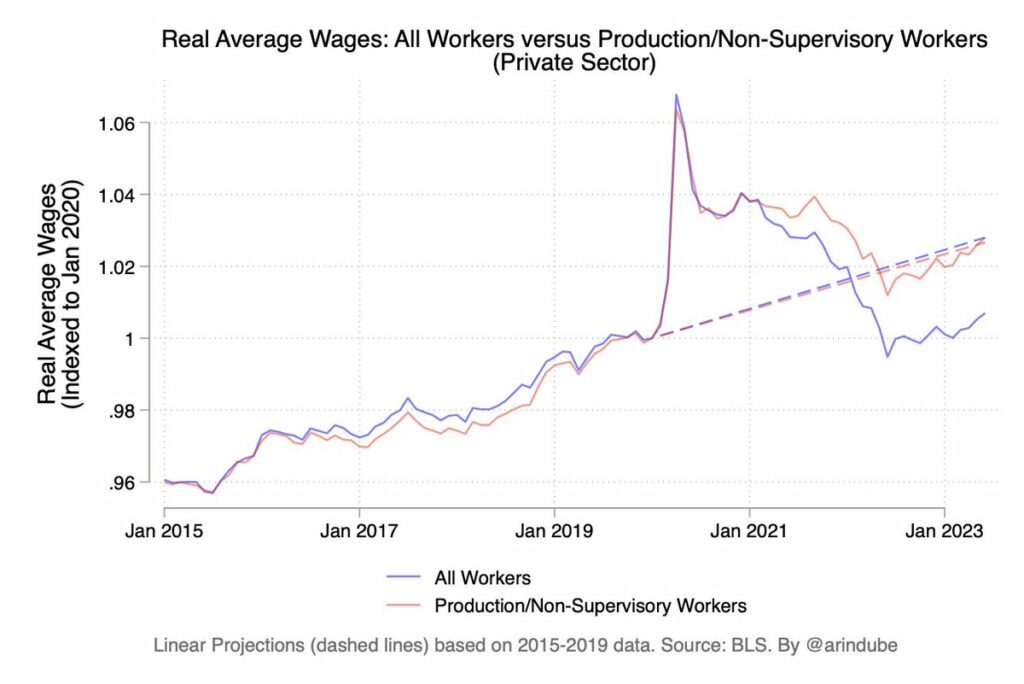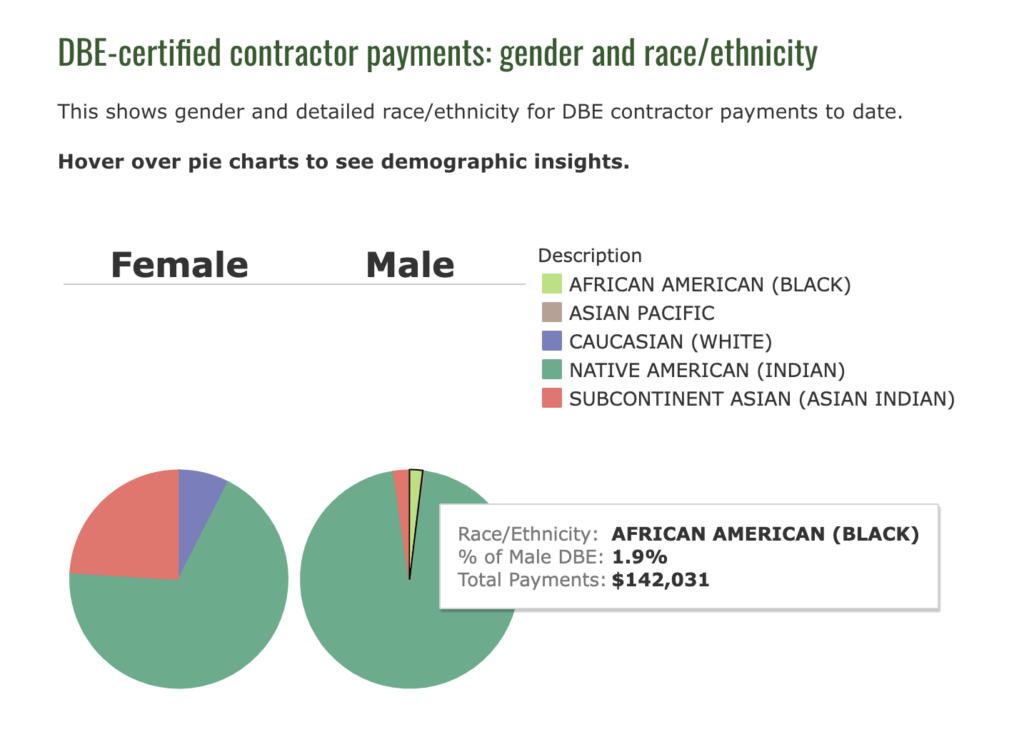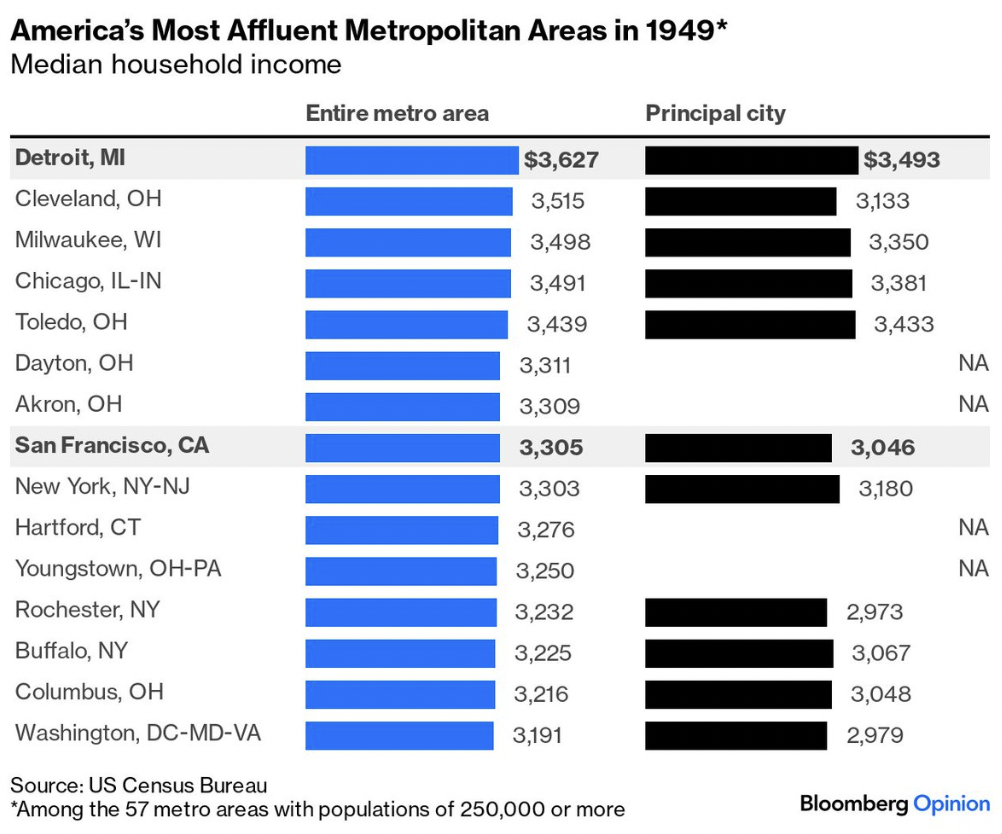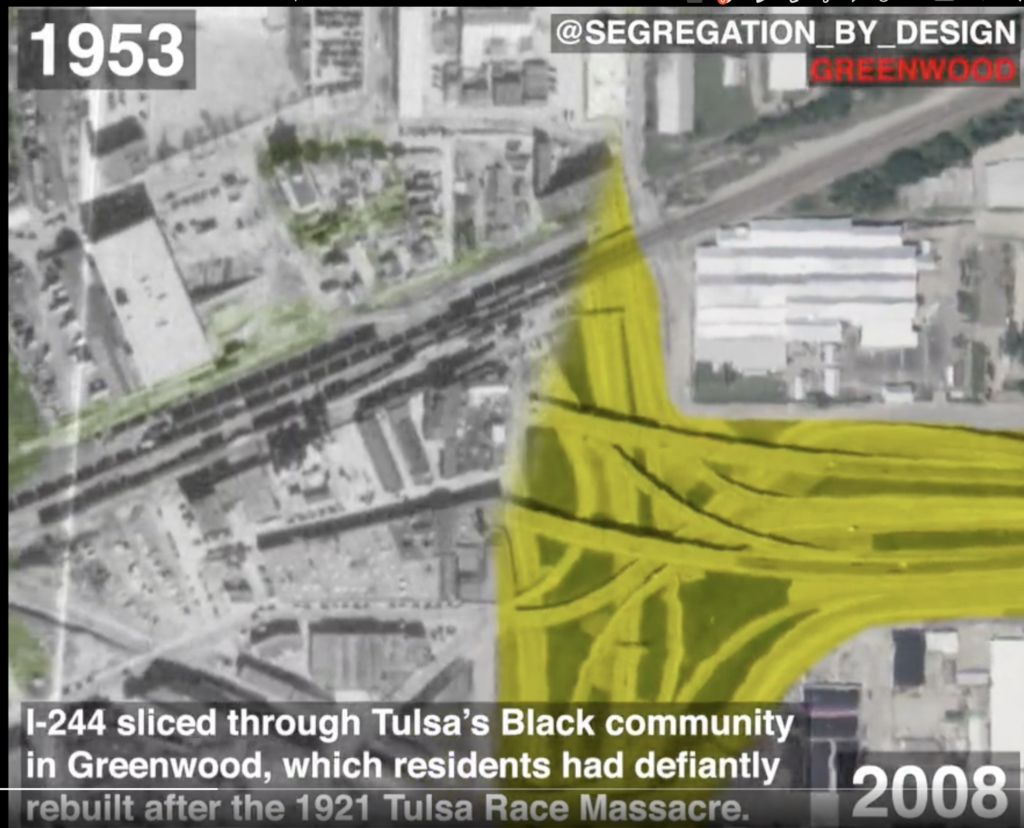What City Observatory did this week
Few highway construction dollars for Black-owned firms in Oregon. The Oregon Department of Transportation (ODOT) is falling short of its own goals of contracting with disadvantaged business enterprises. One-tenth of one percent of construction contracts for the I-205 Abernethy Bridge, ODOT’s largest current project, went to Black construction firms.
ODOT professed a strong interest in helping Black contractors as a selling point for the
I-5 Rose Quarter project, but instead advanced the I-205 Abernethy Bridge project, which has provided very little opportunities for Black-owned firms. Apparently, ODOT is only interested in helping Black-owned businesses if it helps the agency sell a project in Northeast Portland (home to Portland’s historically Black Albina neighborhhood.
Must Read
How the mighty have fallen. Bloomberg Business Week looks back at the history of urban economic success (and decline) in a data-fueled column. His thesis is that despite its current challenges, San Francisco is unlikely to become an economic basket-case. The case is buttressed by a look back at the nation’s highest income metropolitan areas from 1949. It’s a fascinating list: Some are still at the top; but others have fallen. Surprisingly, from today’s perspective, the richest metro list is populated mostly by the industrial powerhouses that have struggled in the intervening seven decades. Detroit was number one; and no fewer than six Ohio metros ranked in the top fifteen.
Nearly all of these older industrial centers have fallen out of the top rank of US metros. As Fox points out, their places have been taken chiefly by emerging tech centers in other parts of the nation. The cities have have consistently been in the top rank include New York, Chicago, San Francisco and Washington DC. These large, diverse, knowledge-driven urban economies are the ones that have adapted best to economic transition, and are likely to do so in the future.
A new look at the destruction of Tulsa’s Black Wall Street. The folks at Segregation by Design have a powerful new animation showing the demolition of the Tulsa’s Greenwood neighborhood. The neighborhood, often called “Black Wall Street” was famously destroyed in the Tulsa Massacre of 1924, but then rebuilt and actually reached its zenith years later, only to recieve its final coup de grace courtesy of the Oklahoma highway department, that plowed two interstate freeways through the heart of the negibhorhood.
Via twitter, Segregation by Design has a short animation showing how highway construction obliterated hundreds of homes and businesses, producing scars that have yet to heal.
New Knowledge
Low wage workers have seen significant wage gains since the pandemic. Labor economist Arin Dube tweeted the most recent data on wage changes since the pandemic. Strikingly, the gains in wages have been proportionately higher for front-line workers (the production and non-supervisory workers who make up 80 percent of the private sector workforce), compared to other workers.
 Wages for both categories of workers surged during the early days of the pandemic (due primarily to a composition effect–part-time and low wage workers had fewer hours of work during the pandemic. As the dashed line on the chart shows, the latest data show that wages for front line workers are significantly outperforming wages for all workers , and that they are about on trend for where they were prior to the pandemic. Wages for all workers are rising more slowly and sare still below trend.
Wages for both categories of workers surged during the early days of the pandemic (due primarily to a composition effect–part-time and low wage workers had fewer hours of work during the pandemic. As the dashed line on the chart shows, the latest data show that wages for front line workers are significantly outperforming wages for all workers , and that they are about on trend for where they were prior to the pandemic. Wages for all workers are rising more slowly and sare still below trend.
The data are evidence of “wage compression”–i.e. a falling difference in wages between the highest paid and lowest paid workers. The continued tight labor markets that have persisted since the pandemic appear to be bolstering the wages of the lowest paid workers.




